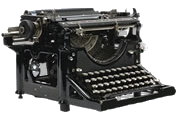The Temper of the Electorate (The New Outlook Magazine, 1932)
Just weeks before the U.S. presidential election of 1932 this article appeared in a political magazine that indicated how the Depression-tossed voters were feeling after three years of economic set-backs. The article consists of 21 pithy little paragraphs that sum up their feelings:
I BELIEVE it possible to feel hungry under either major party, but that under the Republicans it seems to hurt more.
Click here to read about the extensive press coverage that was devoted to the death of FDR…
